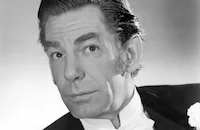Little Nemo: Adventures in Slumberland
Brief Synopsis
Cast & Crew
William T Hurtz
Gabriel Damon
Mickey Rooney
Rene Auberjonois
Danny Mann
Laura Mooney
Film Details
Technical Specs
Synopsis
Little Nemo is a young New Yorker who is carried off by a giant blimp to Slumberland where he is to become a playmate for King Morpheus's daughter, Princess Camille. In Slumberland, Nemo is warned never to open the door which leads to Nightmare Land. Dared by a mischievous trickster named Flip, Nemo opens the door and a dark demon slithers out and abducts the king. Assisted by his flying pet squirrel, Princess Camille, and the delicate Professor Genius, Nemo enters the evil Nightmare Land to rescue King Morpheus.
Cast
Gabriel Damon

Mickey Rooney
Rene Auberjonois
Danny Mann
Laura Mooney
Bernard Erhard
William E Martin
Alan Oppenheimer
Sidney Miller
Neil Ross
John Stephenson
Jennifer Darling
Greg Burson
Sherry Lynn
Guy Christopher
Nancy Cartwright
Ellen Gerstell
Tress Macneille
Michael Mcconnohie
Beau Weaver

Kathleen Freeman
Michael Sheehan
June Foray
Gregg Barger
Bert Kramer
Bever-leigh Banfield

Michael Gough
Michael Bell
Crew
Peggy Abernathy
Hiroshi Adachi
Susumu Aketagawa
Robert Alvarez
Kenneth Anderson
Kenneth Anderson
Kunio Ando
Masahito Aoki
Maria Arnold
Koji Asai
Ryuji Asami
Sherwood Ball
Ray Bradbury
Cecil Broughton
Zita Campisi
John Canemaker
Ken Chandler
Thomas Chase
Steven Clark
Corny Cole
Chris Columbus
Gareth Cousins
Brian Cummings
John Daly
Zahra Dowlatabadi
Robert Eatman
Sheridan Wolf Eldridge
Sutherland Ellwood
Dave Forty
Brian Froud
Yutaka Fujioka
Yutaka Fujioka
Yutaka Fujioka
Derek Gibson
Jean Giraud
Jean Giraud
Jean Giraud
Barry Glasser
Mitch Gordon
George Graig
Jami Lynne Grenham
Kenji Hachizaki
Diana Harris
Hajime Hasegawa
Hajime Hasegawa
Tomoji Hashizume
Masami Hata
Rainey Haynes
David Hilberman
Toshiyuki Hiruma
Peggy Holmes
Kazushige Ichinozuka
Tat Ikeuchi
Hiroyuki Ishido
Ryotaro Ishigame
Atsuko Ito
Michael Jarratt
Oliver Johnston
Paul Julian
Hiroshi Kanai
Nobuyoshi Kanbayashi
Elji Katayama
Shunzo Kato
Boyd Kirkland
Boyd Kirkland
Ruth Kissane
Kenichi Kobayashi
Kiyoshi Kobayashi
Hiroko Kondo
Alfred Kouzel
Shizuo Kurahashi
Catt Lebaigue
Mark Lennon
Kathy Levin
Jack Lynch
Melissa Manchester
Toshihiko Masuda
Winsor Mccay
Winsor Mckay
Mark Mcnally
Yoshinobu Michihata
Larry Miller
Masafumi Mima
Lee Mishkin
Lee Mishkin
Miyoko Miura
Gene Morford
Francis Morgan
Mikio Mori
Ken Mundie
Marty Murphy
Marty Murphy
Masaaki Nanbu
Sam Nicholson
Jin Nishiyama
Kaoru Nishiyama
Takashi Nomura
Takahisa Ogawa
Akihiko Ono
Kyoko Oosaki
Yasuo Otsuka
Yasuo Otsuka
Yasuo Otsuka
Richard Outten
Keiko Oyamada
Jeffrey Patch
Michael Peters
Eric Peterson
Karen Peterson
Roy Prendergast
Nathan Prevost
Vic Radulich
David Robertson
Steve Rucker
Akio Saitoh
Mika Sakai
Leo Salkin
Leo Salkin
Hiroaki Sato
Kazumi Sawaguchi
Bruce Reid Schaefer
Bruce Reid Schaefer
Milt Schaefer
Milt Schaefer
Sander Schwartz
Takeshi Seyama
Bob Shellhorn
Richard M. Sherman
Robert B. Sherman
Koji Shimizu
Chuck Shiota
Hitoshi Shirao
Gary W Stockdale
Seiji Sugawara
David Swift
Takeshi Takano
Koji Takeuchi
Rie Takeuchi
Katsuro Tanaka
Robert Taylor
Robert Taylor
Robert Taylor
Moriyuki Terashita
Frank Thomas
James Thornton
Nobuo Tomizawa
Nobuo Tomizawa
Nobuo Tomizawa
Nobuo Tomizawa
Nobuo Tomizawa
Kazuhide Tomonaga
Kazuhide Tomonaga
Kazuhide Tomonaga
Kazuhide Tomonaga
Kazuhide Tomonaga
Kazushi Torigoe
Robert Towne
Mike Truba
Richard Trueblood
Sachiko Tsuneda
Steve Walker
Sam Weiss
Gwen Wetzler
Laurie Wetzler
Roy Wilson
Roy Wilson
Teruhisa Yamaji
Nizo Yamamoto
Atsushi Yoshino
Hironori Yoshino
Film Details
Technical Specs
Articles
Frank Thomas (1912-2004)
He was born on September 5, 1912 in Santa Monica, California. He showed an interest in art and drawing at a very young age, so it came as no surprise when he graduated from Stanford University in 1934 with a degree in art. Soon after, he began work for Walt Disney Studios and did his first animation for the short Mickey's Elephant in 1936, and was one of the key animators for the studios' first, feature-length animated picture, Snow White and the Seven Dwarfs (1937). His memorable creations of the seven dwarfs offered an emotional sweep and humorous detail to animated characters that audiences had never experienced before, and his career was set.
Thomas' work from this point on would be nothing short of the high watermarks in Disney animation that is justly cherished the world over: the title character in Pinocchio, (1940); Thumper teaching Bambi to skate in Bambi (1941); the wicked stepmother in Cinderella (1950), the Queen of Hearts in Alice in Wonderland (1951), the terrific fight sequence between Captain Hook and Peter Pan in Peter Pan (1953); the Lady and Rover falling in love over a dish of spaghetti and meatballs in Lady and the Tramp (1955); the three good fairies in Sleeping Beauty (1959); Baloo, Mowgli and Kaa in The Jungle Book (1967); and his final work of Bernard and Bianca in the underrated The Rescuers (1977).
Thomas retired from Disney in early 1978, ending a near 44-year relationship with the studio. With longtime friend, and fellow Disney collaborator Ollie Johnston, they went on to author many fine books about the art of animation, most notably Disney Animation: The Illusion of Life (Hyperian Press, 1978) and The Disney Villain (Hyperion Press, 1993). He is survived by his wife of 58 years, Jeanette; sons Thomas, Doug and Gregg; daughter Ann Ayers; and three grandchildren.
by Michael T. Toole

Frank Thomas (1912-2004)
Quotes
Trivia
Miscellaneous Notes
Released in United States on Video February 24, 1993
Released in United States Summer August 21, 1992
Broadcast in USA over The Disney Channel June 24, 1995.
Released in United States on Video February 24, 1993
Released in United States Summer August 21, 1992













